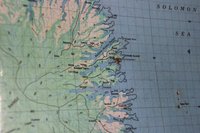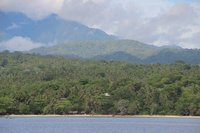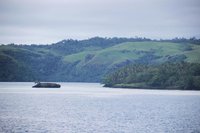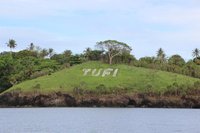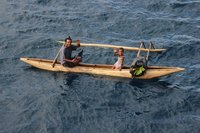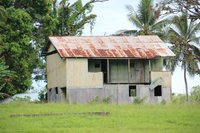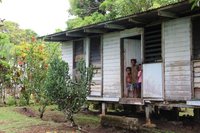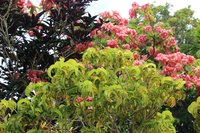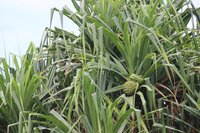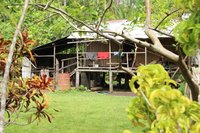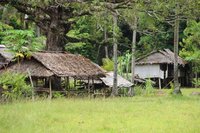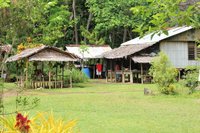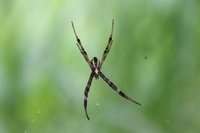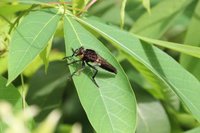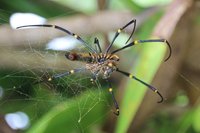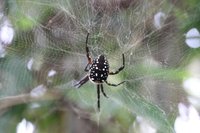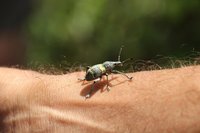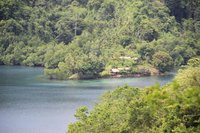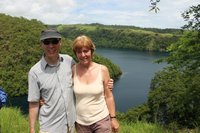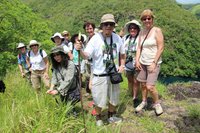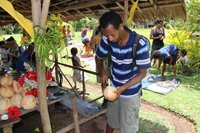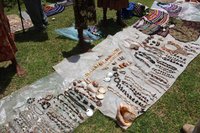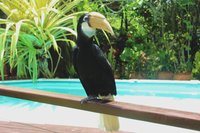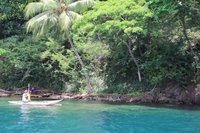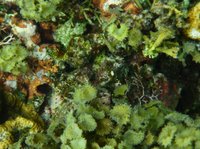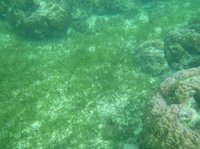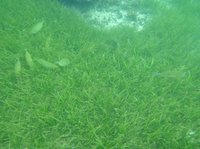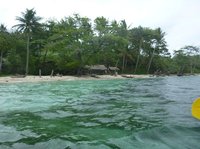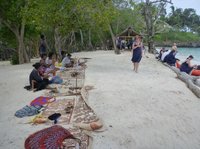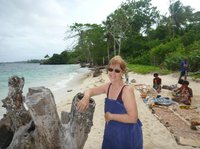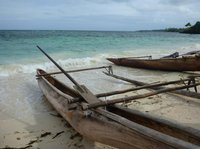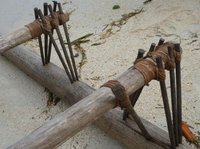| ||||||||||||||||||||||||||||||||||
 |
||||||||||||||||||||||||||||||||||
|
Tufi 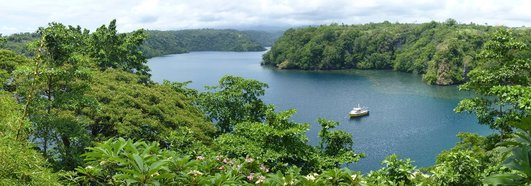 The magnificent scenery around Cape Nelson on the Oro Province is little known or visited. Cape Nelson was formed by the eruption of three volcanoes, whose fast flowing lava created the rias, or fjords. More than 30 fjords are carved into the shoreline, each with warm water containing coral formations and tropical marine life. The fjords are over 90 metres deep and rise vertically out of the water by some 150 metres. Each fjord is surrounded by dense rainforest atop sheer basalt walls, many with waterfalls plunging into the sea.
We set off on the 2 hour ‘Suicide Point Walk’ – it was tough due to the high humidity and no shade rather than the terrain. We walked through grass lands passing Yagaruva Village then through bushland and along a ridge to a spectacular lookout over the large fjords and islands. There are steep drops on either side of the path to a fjord on each side. When the track comes to its narrowest point, the path is barely wide enough to accommodate one person at a time. This narrow division between the fjords is all that prevents Tufi Station from becoming an island.
We saw many varieties of birds and insects
and the world’s largest butterfly,
the “Queen Alexandra’s Birdwing”.
This butterfly inhabits the rainforest, and
specimens with a 30-centimeter wingspan have
been found. The world's largest grasshopper,
longest stick insect, and longest beetle
can also be found in the Tufi area. Local villages are set in isolated areas along the coast and on the imposing slopes of Mount Trafalgar. The local Oro pottery and Tapa cloth are renowned throughout Papua New Guinea.
Access to a local village meant being paddled in local outrigger canoes into one of the fjords and then a short walk through the rainforest to an area where sago making and traditional tattooing were demonstrated. This is followed by the locals performing a ‘sing sing’.
Tapa cloth is made out of the bark or a tree from the hibiscus family. The bark is beaten until all the sap has been milked out and then sun dried. It is then dyed and coloured by hand. The women wear the cloth as wrap around skirts and the men wear it in the fashion of a loin cloth known as a malo.
We went ashore to a white sandy beach, for
snorkelling and sea kayaking. Sandy beaches
meet crystal clear water with coral reefs
and lots of fish. The sea bed is covered
with sea grass and coral. | ||||||||||||||||||||||||||||||||||
 |
||||||||||||||||||||||||||||||||||













